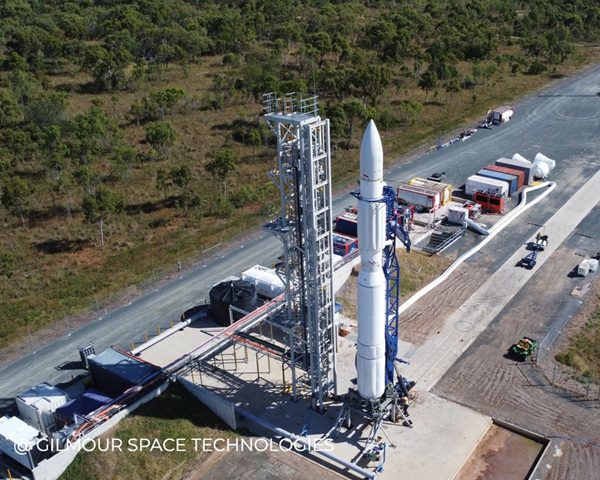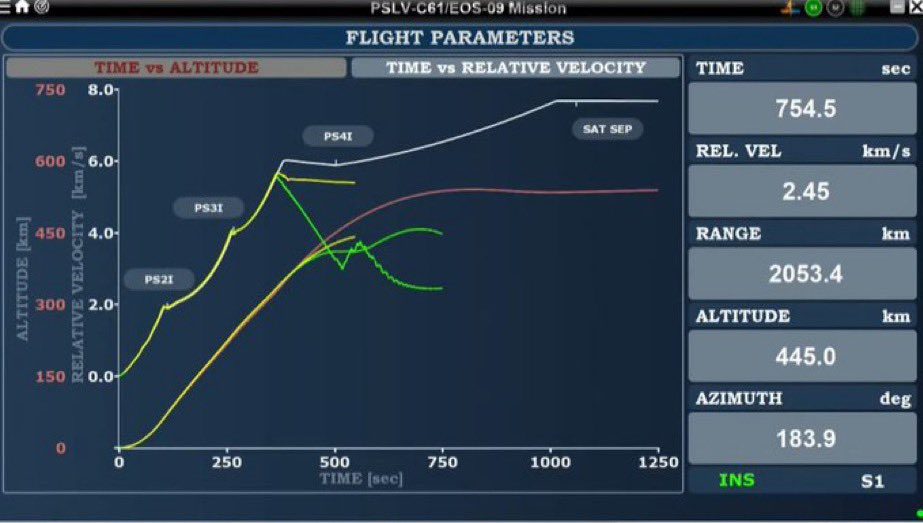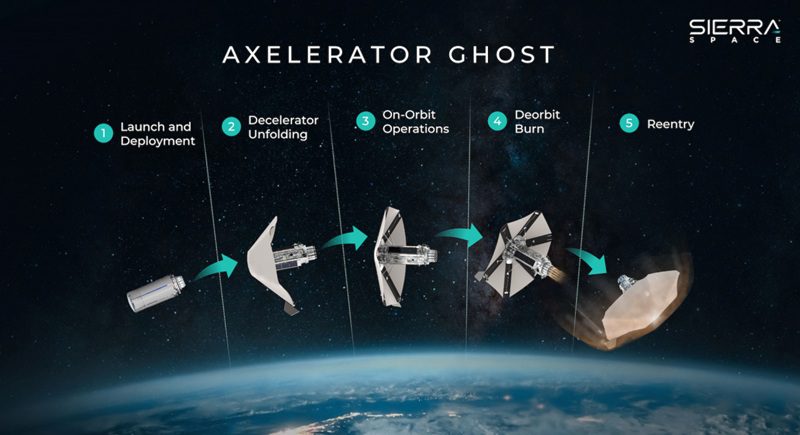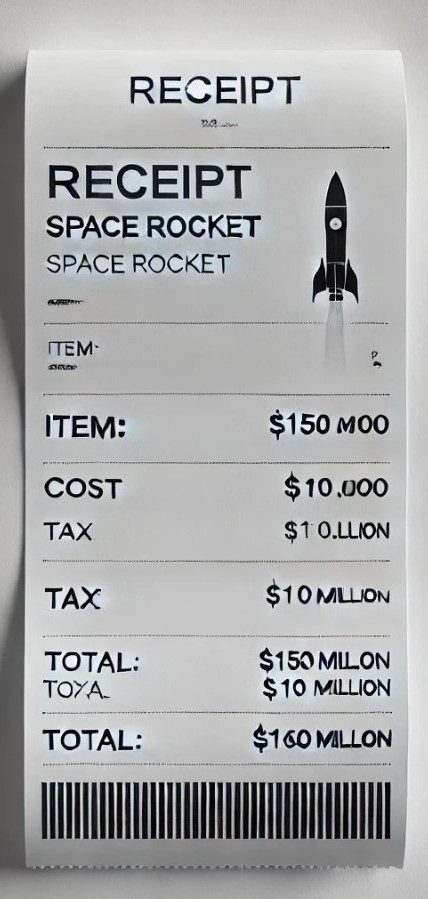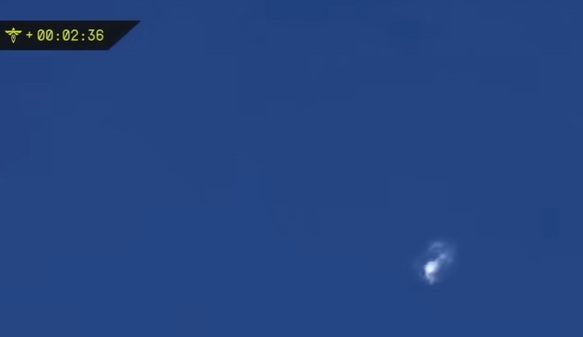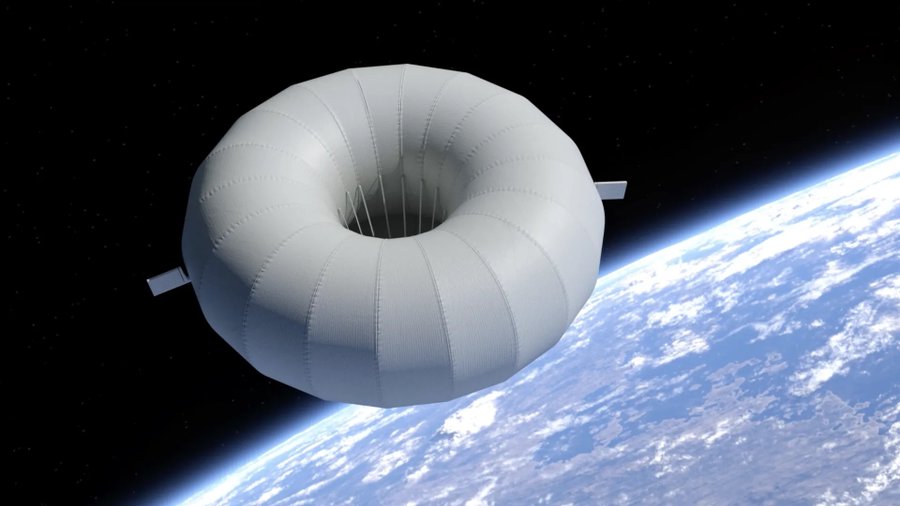I snapped this photo last week at the Khrunichev State Research and Production Space Center stand at the Paris air show. It shows the company’s proposed heavy lift Angara A7 rocket model. During the Russian delegation press conference at the air show Russian Federal Space Agency (Roscosmos) head Anatoly Perminov, with a rare smile, referred to the “complete family” of Angara rockets now on the agency’s exhibit – which houses all the major space companies
The data sheet that accompanied the model can be seen in the extended portion of this blog post. It describes a vehicle launched from Plesetsk cosmodrome, with a 1,133,000kg (2.4 million lb) gross lift off weight, using liquid oxygen and kerosene propellant and able to put 7,600kg into geostationary orbit and 12,500kg into a “geo transfer orbit” with what it calls a KVTK-A7 upper stage. How different is that to the Breeze M/KVTK upper stage I wonder? There is also a reference to a “support orbit” with the figure 35. Is that 35,000kg to LEO?
Talked about publicly on and off for a number of years the earliest article Hyperbola can find is a 1 March 2005 TASS article referring to the A7 as able to put 41,000kg into low Earth orbit (along with talk of a 100,000kg to LEO capable super booster) but there was no reference to this on the Paris air show data sheet – I did get to meet the head of public relations for Khrunichev and forgot to ask, doh! Too busy with the ILS folks, more on that in a future article
Strangely there is not even a mention of the A7 on the Khrunichev website and during my email contact them prior to writing this article no mention was made of the A7. Perhaps recent difficulties with Angara made talk of the A7 a little academic? However a potted history and some technical detail with some artist’s impressions can be found at Anatoly Zaks’ Russian Space Web site

